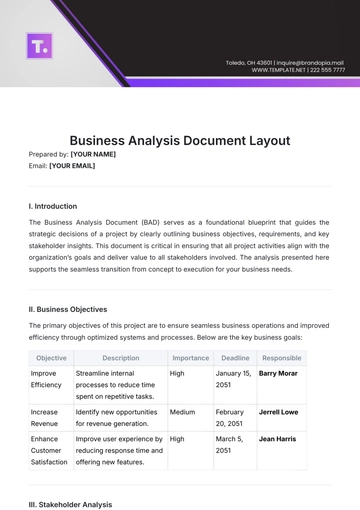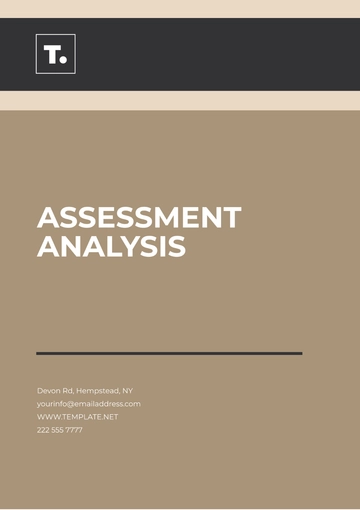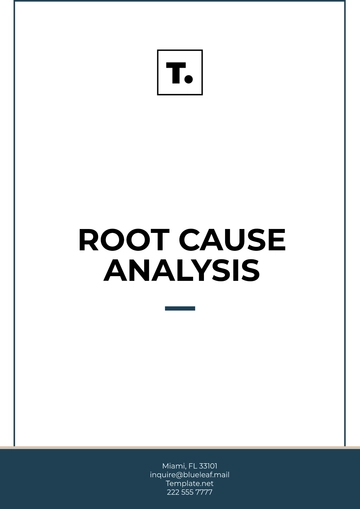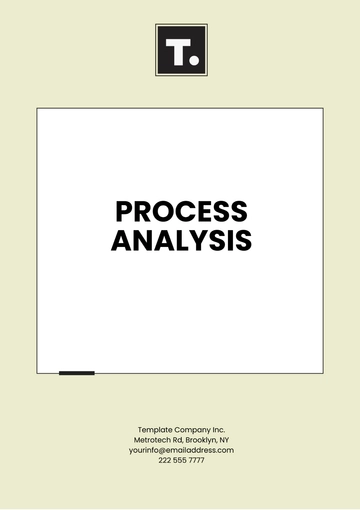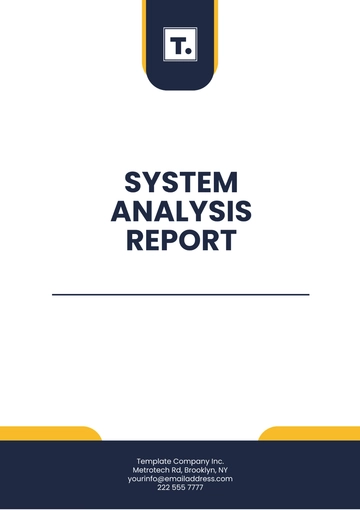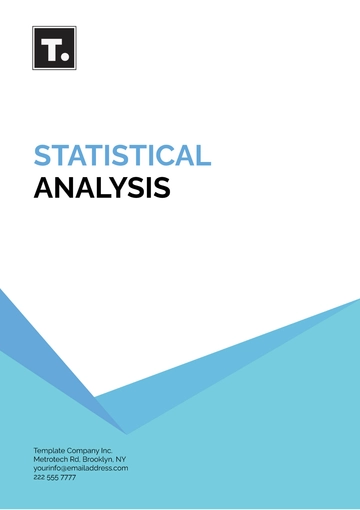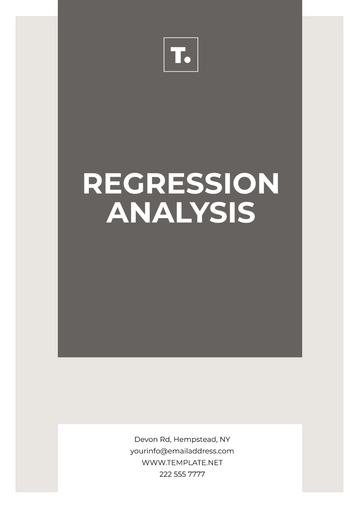Free Character Analysis

Prepared By : | Maricar David |
Company : | Dummy Company |
Department : | [YOUR DEPARTMENT] |
I. Introduction
This document offers a detailed analysis focusing on character performances and narrative structures within selected media pieces. This analysis aids professionals in fields such as film studies, theater, and television production to acquire a deeper understanding and appreciation of artistic works.
II. Objective of Analysis
The primary aim of this analysis is to:
Evaluation of Performances: Delving into the nuances of performances by the actors across various scenes, examining their ability to convey emotions, motivations, and character depth.
Narrative Structure Analysis: Dissecting the narrative structure employed in the media pieces to understand its effectiveness in engaging the audience, fostering immersion, and delivering the intended message or theme.
Exploration of Character Depth: Unpacking the emotional and psychological layers of characters portrayed, deciphering their complexities, internal conflicts, and evolution throughout the narrative arc.
Recommendations for Improvement: Offering constructive insights and recommendations aimed at refining both narrative construction and performances, thereby contributing to the elevation of future works within the medium.
III. Methodology
The analysis was conducted following these steps:
Selection Criteria: Media pieces were chosen based on a blend of popularity, critical acclaim, and diversity across genres to ensure a well-rounded assessment.
In-depth Examination: Expert analysts engaged in detailed viewing and scrutiny of each selected piece, employing a keen eye to dissect performances, narrative techniques, and character portrayals.
Utilization of Analytical Tools: Specialized tools and frameworks tailored to media studies were employed to provide a structured approach to analysis, enhancing objectivity and depth of understanding.
Feedback Integration: Feedback loops were established, incorporating perspectives from focus groups and professional critics, enriching the analysis with diverse viewpoints and interpretations.
Mixed Methods Approach: Quantitative metrics were intertwined with qualitative assessments, facilitating a holistic evaluation encompassing both measurable indicators and nuanced qualitative insights.
IV. Media Pieces Analyzed
Examples of media analyzed include:
"Example Movie One"
Directed by [Director Name]: An exploration of cinematic storytelling prowess, dissecting the directorial choices, performances, and narrative arc.
"Example Play Two"
Written by [Playwright Name]: A deep dive into theatrical storytelling, examining the richness of dialogue, character development, and thematic exploration.
"Example TV Show Three"
Produced by [Producer Name]: A study of episodic narrative construction, character dynamics, and long-form storytelling techniques within the realm of television production.
A. Key Findings Per Media Piece
Media Title | Key Performance Highlights | Narrative Strengths |
|---|---|---|
Example Movie One | Lead actor's transformational role | Complex plot with unexpected twists |
Example Play Two | Ensemble cast cohesion | Deep thematic elements |
Example TV Show Three | Consistent character development across episodes | Engaging cliffhangers and pacing |
V. Analysis of Performance
Each selected performance was evaluated based on:
Acting Quality:
Emotional Range:
The spectrum of emotions portrayed by the actors was scrutinized, ranging from subtle nuances to intense displays, gauging their ability to authentically convey the depths of human experience.
Authenticity:
The degree to which actors immersed themselves in their roles, transcending the boundaries of mere portrayal to embody the essence of their characters, thus enhancing the believability and relatability of their performances.
Character Alignment:
The consistency of portrayal in alignment with the established traits, motivations, and complexities of the characters, ensuring a coherent and compelling depiction throughout the narrative.
Interaction with Other Characters:
Chemistry:
The dynamics between characters were analyzed, assessing the palpability of chemistry, camaraderie, or conflict, which significantly contribute to the authenticity and depth of interpersonal relationships depicted on screen or stage.
Conflict Handling:
The finesse with which actors navigated moments of tension, confrontation, or resolution, elucidating their ability to engage in compelling and believable exchanges that drive the narrative forward and deepen character development.
Audience Impact:
Reception:
Both live audience reactions and recorded audience responses were considered, providing valuable insights into the immediate impact and resonance of performances, whether eliciting laughter, tears, suspense, or introspection.
Response:
The lasting impression left on the audience, encompassing post-viewing reflections, discussions, and emotional resonance, which serve as indicators of the effectiveness and enduring power of the performances to captivate and resonate with viewers.
VI. Analysis of Narrative
The narrative structures were dissected to understand:
Plot Development:
Structure: The architectural framework of the narrative was scrutinized, encompassing the arrangement of events, their interconnectivity, and the unfolding of story arcs, to discern the effectiveness of plot progression in engaging and captivating the audience.
Pacing: The rhythm and tempo at which the narrative unfolds were assessed, considering the ebb and flow of tension, revelation, and resolution, which significantly contribute to the overall momentum and immersive experience for the audience.
Climax: The pinnacle moment of tension, revelation, or resolution was analyzed, evaluating its impact, emotional resonance, and narrative payoff in delivering a satisfying and cathartic culmination to the story.
Atmosphere and Setting:
Contribution to Narrative: The role of atmosphere and setting in shaping the mood, tone, and thematic resonance of the narrative was explored, examining how these elements serve as dynamic backdrops that enrich character dynamics, narrative tension, and thematic exploration.
Immersive Experience: The degree to which the audience is transported into the world of the narrative through vivid and evocative descriptions of settings, sensory details, and atmospheric cues, fostering a sense of immersion and emotional investment in the unfolding story.
Thematic Depth:
Underlying Messages: The exploration of underlying themes, motifs, and symbolic imagery embedded within the narrative fabric was undertaken, unveiling the deeper layers of meaning, societal commentary, and philosophical inquiry that resonate with audiences on a profound and introspective level.
Societal Commentary: The narrative's capacity to reflect, critique, or challenge prevailing social norms, cultural values, and ideological paradigms was analyzed, shedding light on its potential to provoke thought, inspire discourse, and effect societal change.
VII. Conclusions and Recommendations
Based on our thorough analysis, our findings indicate:
Key strengths and areas for improvement for each actor and narrative element.
Strategic recommendations for directors and producers to enhance future productions.
VIII. Appendices
Additional data, graphs, and participant feedback are provided to support the analysis:
Appendix A: Detailed actor performance scores
Appendix B: Audience feedback compilations
Appendix C: Comparative narrative analysis charts
- 100% Customizable, free editor
- Access 1 Million+ Templates, photo’s & graphics
- Download or share as a template
- Click and replace photos, graphics, text, backgrounds
- Resize, crop, AI write & more
- Access advanced editor
Unlock the potential of your characters with the Character Analysis Template from Template.net. Crafted to streamline your creative process, this customizable tool offered by Template.net empowers you to delve deep into character development effortlessly. Downloadable and printable, this template is your key to creating compelling characters for any narrative. What's more, it's editable in our AI Editor Tool, ensuring seamless customization.




